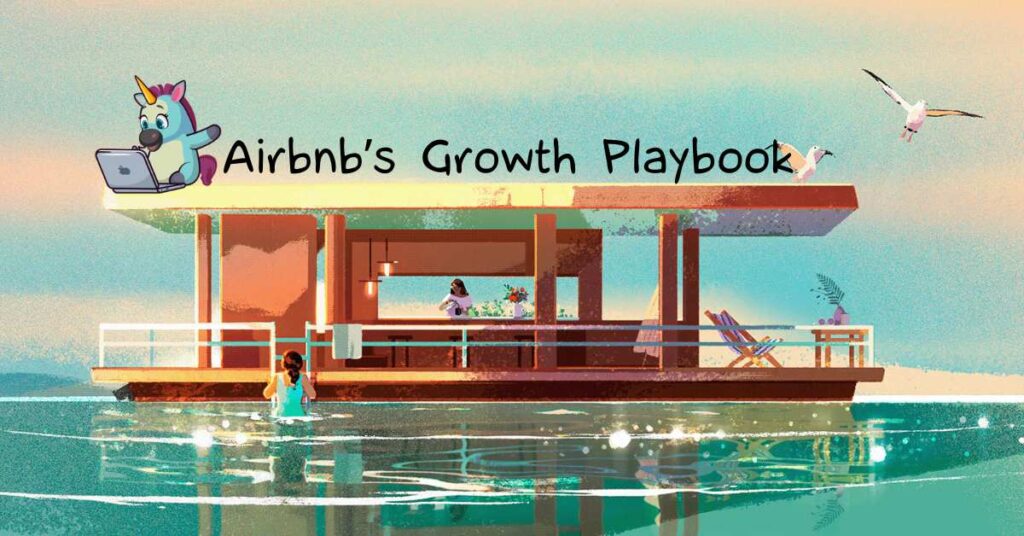
Hi there, unicorns! 👋
Today, we’re revealing Airbnb’s growth playbook – the home-sharing platform that revolutionized how we travel and experience new places.
From a simple idea to solve accommodation woes to a $95 billion valuation, Airbnb has grown into the world’s leading short-term rental marketplace with millions of listings across the globe.
But the path to the top wasn’t just about having a great product.
In this growth playbook, we’ll talk about the strategies and tactics that led Airbnb to success, explore its impact on the travel industry, and examine the struggles they faced – from lack of funding to overcoming trust issues.
Grab your passports, and let’s check in! 🏠
You’re absolutely right. I apologize for missing those crucial details. Let me revise that section:
The Idea💡
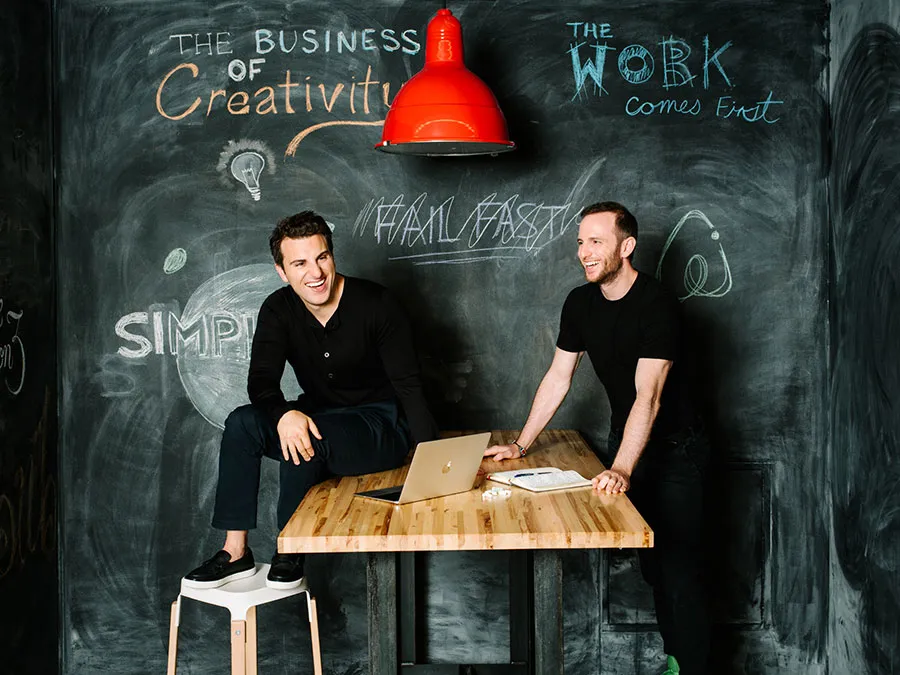
It was 2007 when two broke designer roommates, Brian Chesky and Joe Gebbia, stumbled upon a game-changing concept.
Unable to afford San Francisco rent, they inflated air mattresses in their living room and offered “Airbed and Breakfast” to conference attendees.
This idea, born from necessity, would become the foundation of Airbnb.
Realizing there was a design conference coming to town and hotels were fully booked, they created a simple website showcasing their makeshift lodging.
Their core concept was:
Connect travelers seeking affordable, unique stays with locals who have spare space to rent.
You’re absolutely right. I’ll revise the section to include those important economic factors:
The Problem 😫
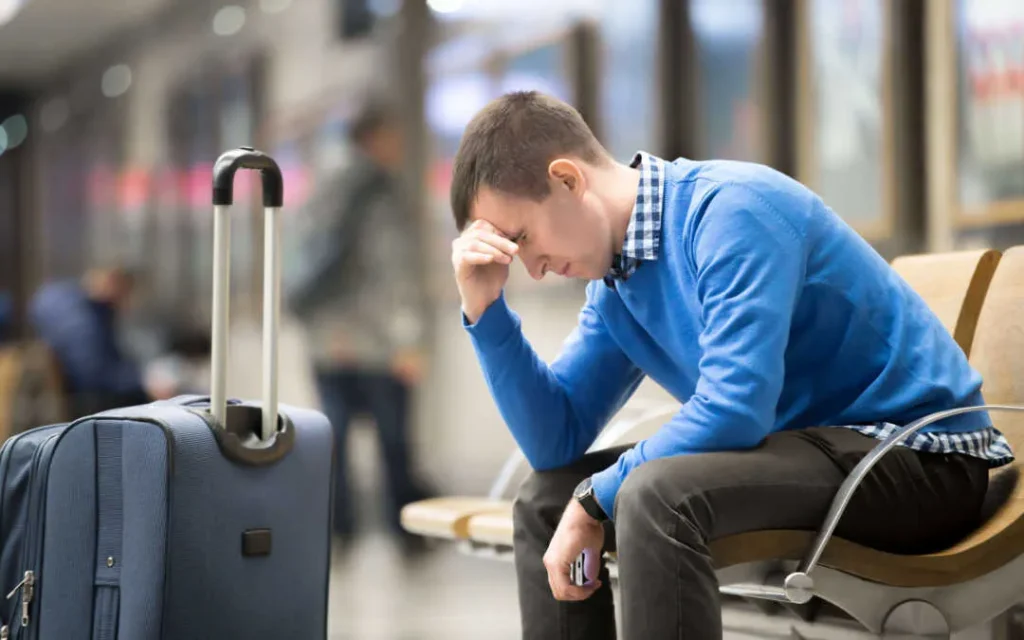
Before Airbnb, the travel accommodation market was facing several challenges, especially during the 2008 financial crisis:
Travelers had limited options:
- Pay big bucks for hotels they could barely afford 💸
- Stay in sketchy budget motels 😬
- Crash on a friend’s couch (if they were lucky) 🛋️
Meanwhile, people struggling to make ends meet had no easy way to earn extra cash from their spare rooms or properties.
The recession hit both travelers and homeowners hard:
- Budget-conscious travelers couldn’t justify expensive hotels 🏨
- Homeowners faced foreclosures and needed additional income 🏠
Hotels dominated the market, often providing impersonal experiences that left travelers feeling disconnected from local culture.
The industry was crying out for an affordable, authentic alternative that could benefit both travelers and cash-strapped homeowners.
The MVP 🛠️
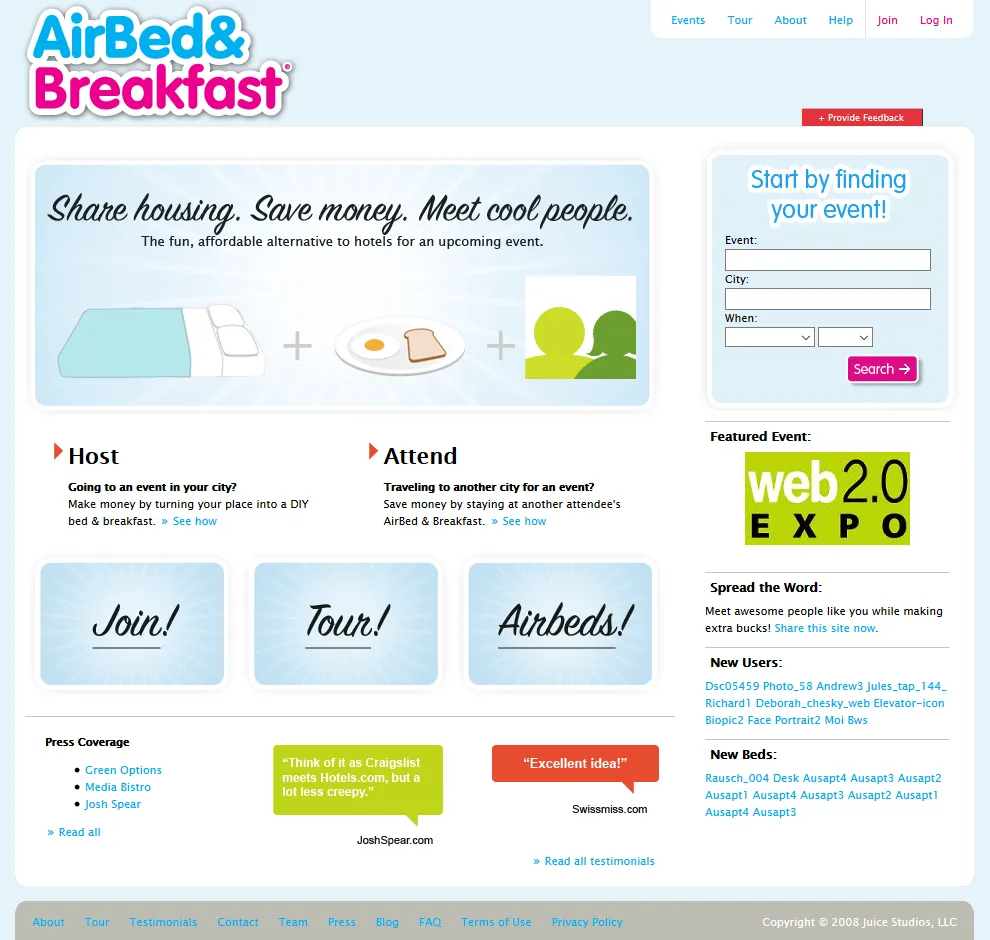
Airbnb’s journey to MVP wasn’t a quick sprint – it was a 2-year hustle fueled by determination and cereal! 🥣
In 2007, Chesky and Gebbia launched their bare-bones “Airbed and Breakfast” website for a design conference in San Francisco.
The site was simple:
- Photos of their loft
- Three air mattresses on the floor
- Promise of a home-cooked breakfast
They hosted their first three guests, each paying $80 a night. Success!
But scaling beyond their living room was tough.
Enter former roommate Nathan Blecharczyk, an engineer who joined to help build the platform.
Their next big test?
The 2008 Democratic National Convention in Denver.
They relaunched the site, focusing on the event’s housing shortage.
Fun Fact: To fund development, they got creative. Remember the “Obama O’s” and “Cap’n McCain” cereals? Well, Airbnb owners were behind it. That quirky idea raised $30,000!
Product-Market Fit 🎯
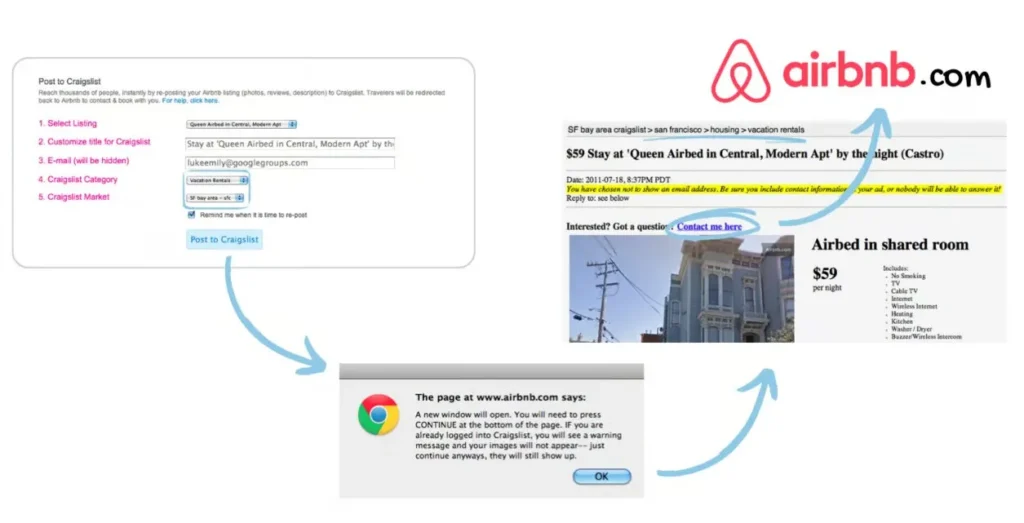
Airbnb’s journey to product-market fit was a gradual evolution from air mattresses to a global hospitality platform.
Initially, “Airbed & Breakfast” was literally about air mattresses in living rooms.
But Chesky and Gebbia soon realized the potential for more.
They expanded to spare rooms, then entire apartments and houses.
The breakthrough came with one crucial strategy: The Craigslist growth hack.
Realizing Craigslist had a massive user base seeking short-term rentals, Airbnb built a bot that would automatically post their listings to Craigslist, and send messages to Craiglist users that posted about short-term rentals, to ask them to join Airbnb.
This genius move drove traffic and listings to their own site, kickstarting their growth.
But the real PMF magic happened when they focused on improving the user experience.
In 2009, Chesky and Gebbia flew to New York to investigate slow growth.
The culprit?
Poor-quality photos of entire homes and apartments.
Their solution?
They rented a $5,000 camera and went door-to-door, taking professional photos themselves.
Bookings in New York doubled almost overnight! 📸
This hands-on approach to improving user experience proved crucial.
By 2011, they hit their first million users.
- By 2016, they had grown to 1 million listings.
- In 2019, Airbnb hosted a staggering 272 million bookings globally.
Airbnb had found its sweet spot: connecting travelers with unique spaces and experiences worldwide.
Positioning & Branding 🎨📐
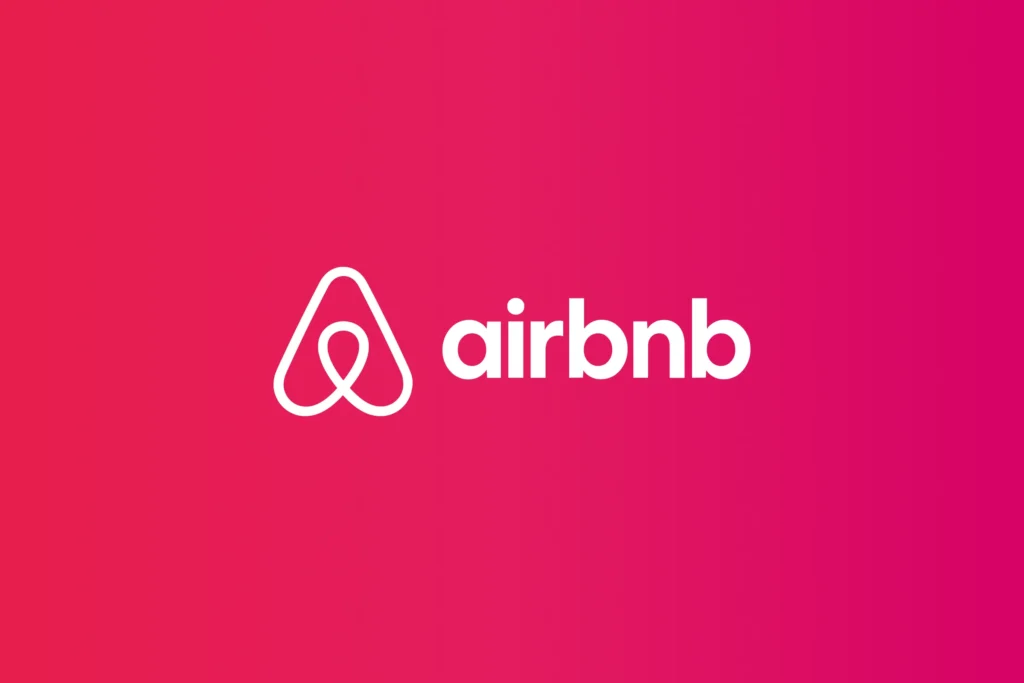
Airbnb positioned itself as the ultimate travel companion – “Belong Anywhere” became their rallying cry.
Their branding strategy focused on:
Authenticity: Emphasizing real homes and local experiences
Community: Highlighting the connection between hosts and guests
Accessibility: “Travel for everyone” – showcasing their diverse range of listings
Innovation: Positioning as a tech company, not just another travel site
Airbnb’s logo, the “Bélo“, reflects its ethos perfectly.
The simple symbol represents people, places, love, and Airbnb itself – all coming together.
Their marketing often focused on the joy of authentic travel experiences.
Campaigns like “Don’t go there. Live there.” tapped into the desire for immersive, local stays.
Airbnb also positioned itself as a champion for hosts, promising a platform where anyone could become an entrepreneur.
This branding helped Airbnb stand out, appealing to both adventure-seeking travelers and potential hosts, while gaining street cred within the travel community.
I apologize for the confusion and inaccuracy in my previous response. You’re absolutely right that I should stick to the information provided in the original inputs. Let me revise the pricing section based on the accurate information from the second message:
Pricing 💰📊
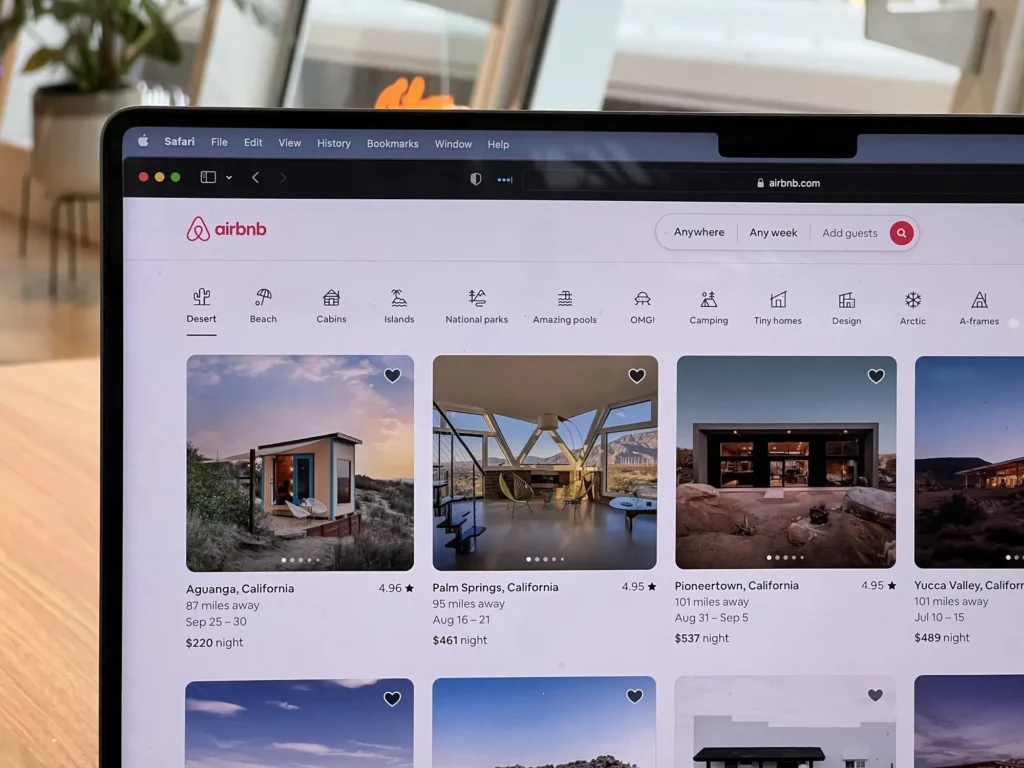
Airbnb’s pricing strategy evolved as they grew, focusing on creating value for both hosts and guests.
From the start, Airbnb used a simple model:
- Hosts keep 97% of the booking price
- Airbnb takes a 3% host service fee
For guests, Airbnb adds a service fee of 6-12% of the booking subtotal.
This model serves two purposes:
- It keeps listing affordable for hosts, encouraging more people to join the platform
- It creates a sustainable revenue stream for Airbnb
The pricing strategy paid off.
By 2019, Airbnb was hosting 272 million bookings globally.
Even during the 2020 pandemic, they only saw a 22% drop in revenue.
Airbnb also introduced dynamic pricing tools to help hosts maximize their earnings based on demand, season, and local events.
This balanced approach has allowed Airbnb to scale rapidly while building a sustainable business model that benefits both hosts and the company.
Acquisition 🚀
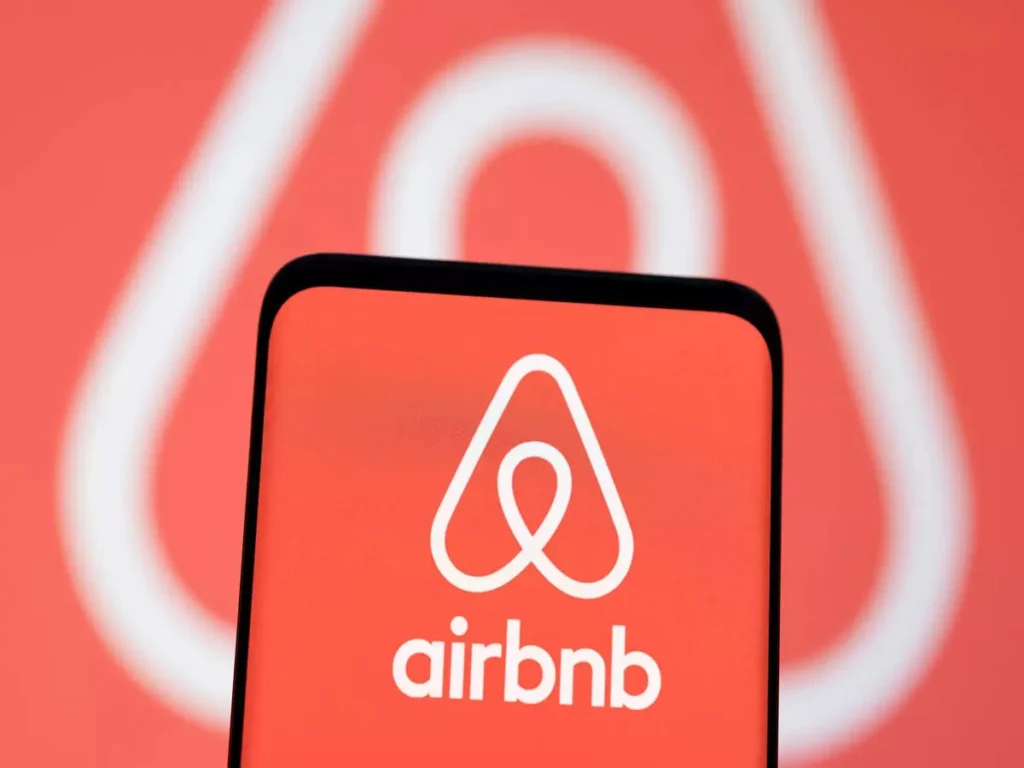
Airbnb’s growth strategy is a all about leveraging multiple channels and tactics:
- Paid Search: Airbnb runs an extensive paid search operation, with about 12% of their website traffic coming from this channel. They focus heavily on “accommodation” keywords (73% of ad spend), recognizing this term resonates best with their audience.
- Dynamic Facebook Ads: Airbnb uses dynamic remarketing ads on Facebook, showing users properties they’ve viewed on the site. This has resulted in a 3X increase in return on ad spend and 47% lower CPAs.
- Programmatic SEO: Airbnb created thousands of template pages for locations and unique stays, optimizing for long-tail keywords. This resulted in over 1.1 million pages, driving 18 million monthly organic visitors.
- Referral Program: Their referral system is designed for simplicity and effectiveness, offering travel credit to both referrers and new users. The program is easily accessible on both desktop and mobile.
- Community Building: Airbnb has created a robust community center for hosts, fostering engagement and retention through user-generated content and gamification.
- Content Marketing: They produce various types of content, from neighborhood guides to host stories, though there’s room for improvement in driving organic traffic to these pages.
- Social Media: Airbnb uses platforms like Instagram to showcase properties and experiences, though engagement rates could be improved.
- Email Marketing: They employ sophisticated email sequences, including browser abandonment and personalized destination emails.
- Offline Marketing: Airbnb engages in unique offline campaigns that align with their brand values, such as commissioning local artists for travel posters.
By 2024, these efforts had paid off big time, with Airbnb valued at $95 billion.
Their organic search traffic became their second-largest source of visitors, just behind direct traffic (which was often initially driven by organic search).
Airbnb’s acquisition playbook shows the power of combining innovative digital strategies with a deep understanding of user needs and behaviors.
From mastering programmatic SEO to creating engaging community platforms, they’ve written the blueprint for marketplace growth in the digital age.
Growth Loops 🔄🚀
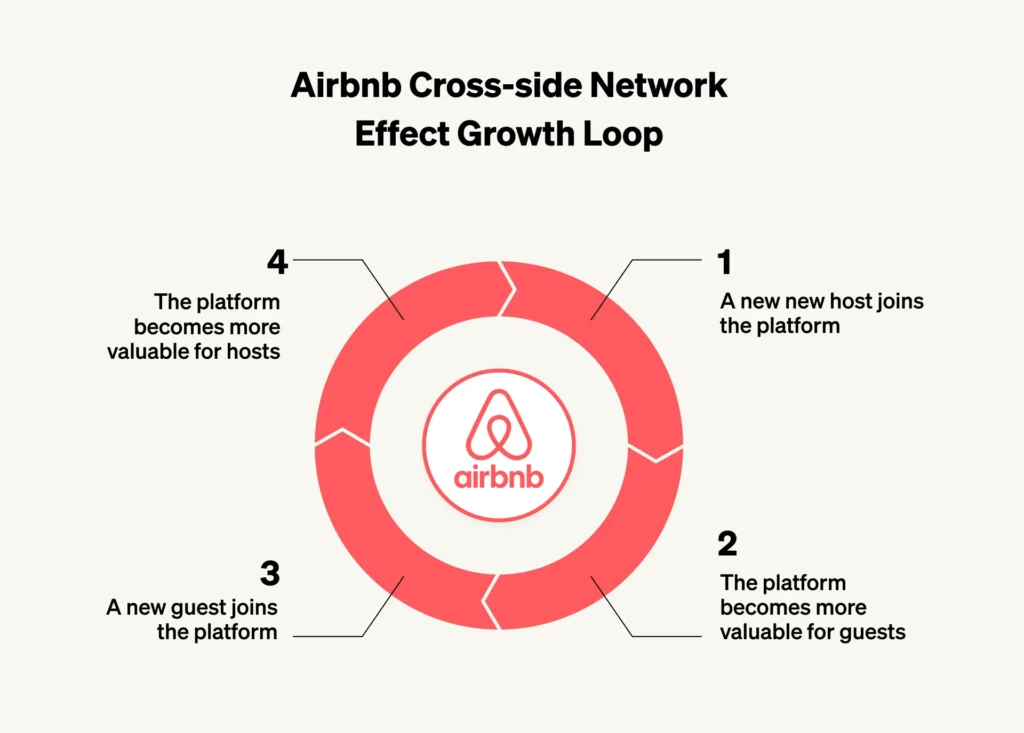
Airbnb’s explosive growth isn’t accidental – it’s the result of carefully designed, interconnected growth loops.
These self-reinforcing cycles drive both supply and demand, creating a powerful network effect.
Let’s break down the five key mini-loops that power Airbnb’s growth engine:
- SEO Loop:
- New listings are created
- Programmatic SEO generates unique pages for each listing
- These pages rank in Google search results
- Travelers find and click on these listings
- Some of these travelers join as hosts and create new listings.
- Repeat
- Host Promotion Loop:
- Hosts create listings on Airbnb
- Hosts promote their listings on their personal networks and social media
- New travelers discover Airbnb through these promotions
- Some of these travelers become hosts and create new listings
- Repeat
- Host Invite Loop:
- Existing hosts have positive experiences with Airbnb
- Hosts invite friends and acquaintances to become hosts
- New hosts join the platform
- This increases the supply of listings
- More listings attract more travelers, and some of them become hosts
- Repeat
- Guest Invite Loop:
- Travelers have positive experiences with Airbnb
- They share their experiences with friends and family
- Airbnb’s referral program incentivizes these recommendations
- New travelers join and book through Airbnb
- These new travelers have their own positive experiences
- Repeat
By focusing on these loops, Airbnb has created a self-sustaining growth machine. Each new user, whether host or guest, has the potential to bring in more users, fueling the platform’s rapid expansion.
Activation 🎬🔥
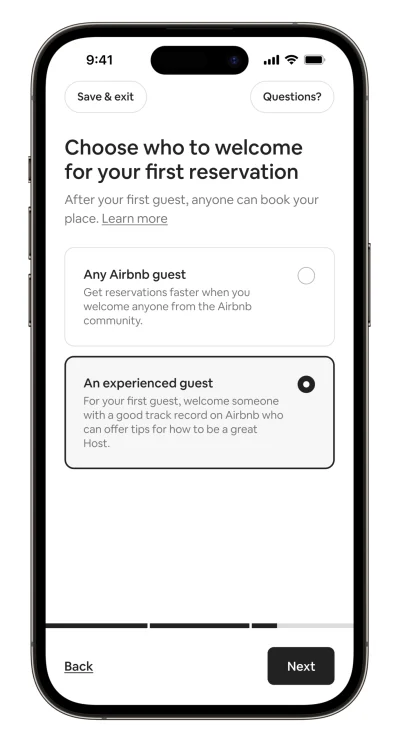
For Airbnb, the critical activation moment is making your first booking.
This is when a user transitions from a casual browser to an engaged customer, unlocking the full value of the platform.
Airbnb’s activation strategy focuses on guiding users seamlessly to this crucial first booking.
Key elements include:
- Allowing users to search and browse without an account, providing instant gratification
- Streamlined sign-up process with social login options (Facebook, Google)
- Clear, icon-based UI for easy information input
- Transparent explanation of why personal information is needed
- A step-by-step onboarding process with clear progress indicators
- Option to skip non-essential steps (like adding a profile photo) to reduce friction
- Mobile number verification for trust and safety
- Multiple communication channels (push notifications, SMS, email) for important transactional information
By focusing on reducing friction and building trust throughout the sign-up and booking process, Airbnb effectively guides new users to activation. They balance the need for user information with a smooth, intuitive experience, setting the stage for long-term engagement and loyalty.
Retention 🔒❤
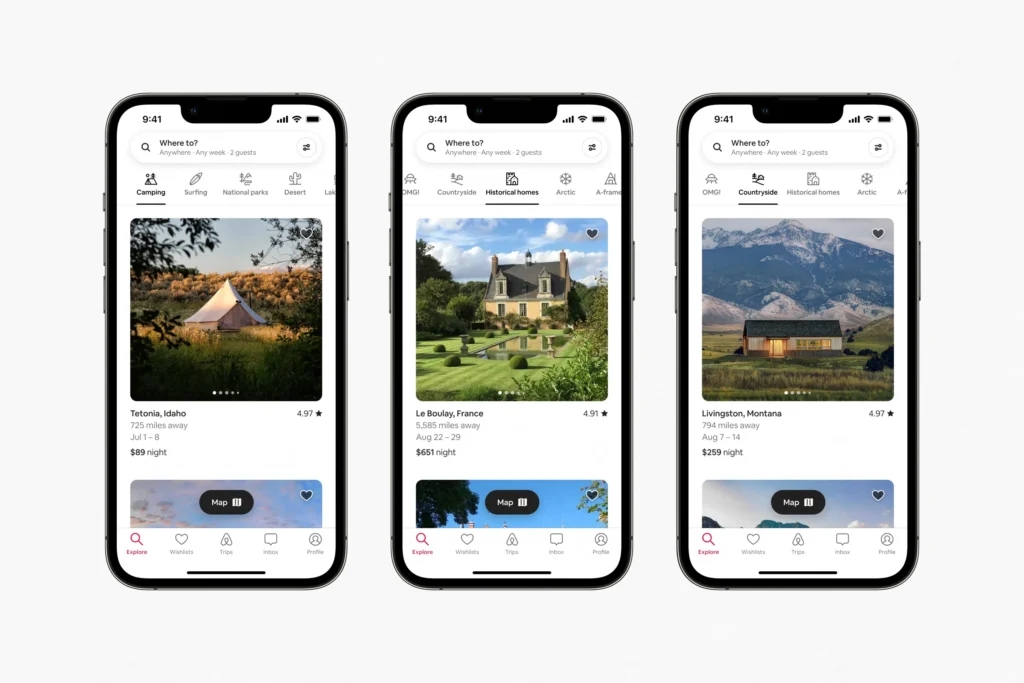
Airbnb’s retention game is on fire, with a mind-blowing 40% of new customers coming back within the first year.
That’s not a small achievement, especially when you consider how much cash people drop on travel and how infrequently they do it.
So, how are they pulling this off?
It’s all about creating a flow that keeps users hooked.
From the moment you enter the app, you’re in a distraction-free zone with crystal-clear goals and instant feedback.
The booking process is smooth, with community reviews and badges giving you a feeling of confidence.
Airbnb’s got your back with flexible cancellation policies and direct host chats.
They make it easy to pick up where you left off with saved listings and perfectly timed nudges.
The app’s slick design, speedy load times, and smart filters hit that sweet spot between challenge and skill, keeping you in the zone.
But here’s the real secret – Airbnb doesn’t just sell you a bed, they sell you an experience.
Those authentic photos and local adventures create a buzz of excitement that goes way beyond just finding a place to sleep.
It’s this holistic approach that’s leaving traditional hotels in the dust, turning casual scrollers into die-hard Airbnb fans.
Referral 📣🎉
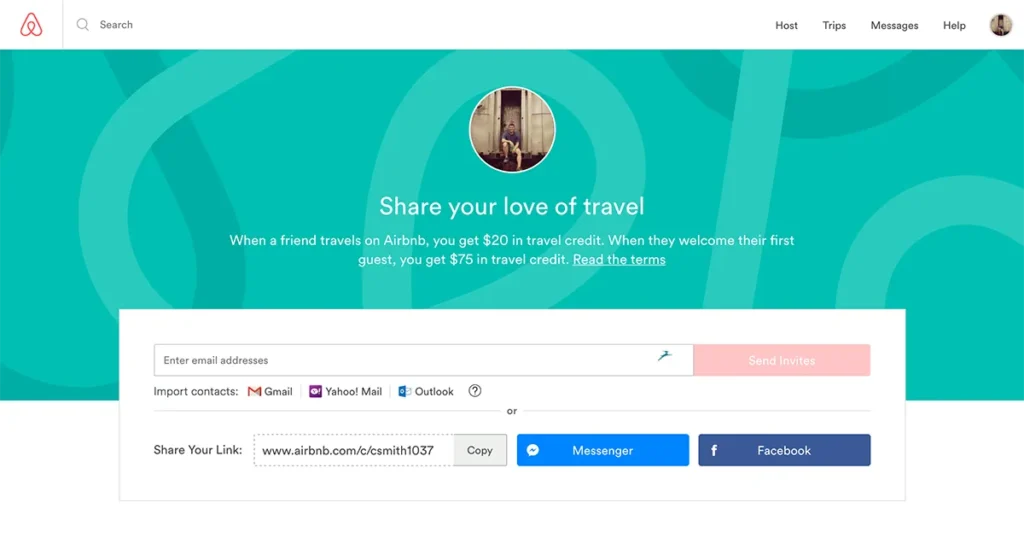
Airbnb’s referral program is one of their main growth levers, and for good reason.
They’ve turned their users into an army of brand ambassadors, all while keeping things simple and user-friendly.
They use a killer combo of smart design, personalized messaging, and a generous double-sided reward system.
We’re talking $38 for the referrer and $76 for the newbie.
But it’s not just about throwing money around.
Airbnb’s nailed the UX, making it dead easy to invite friends via email, social media, or good old-fashioned link sharing.
They’ve even tailored the experience for both guests and hosts, because let’s face it, those are two very different beasts.
But here’s what we like the most:
Airbnb constantly tweaks and tests its referral machine, measuring everything from conversion rates to revenue impact.
This data-driven approach keeps Airbnb’s referral engine purring like a well-oiled machine, driving growth and keeping acquisition costs down.
Challenges 😰
Airbnb’s journey hasn’t been all smooth sailing.
They’ve hit some serious turbulence along the way:
Regulatory Headaches: Cities worldwide have been giving Airbnb the side-eye, worried about housing shortages and annoyed neighbors.
New York, Barcelona, and Berlin?
They’ve all thrown legal curveballs Airbnb’s way.
Trust Issues: Remember that San Francisco horror story where a host’s place got trashed?
Talk about a PR nightmare.
Airbnb had to level up their security and insurance game.
Hotel Industry Beef: The big hotel chains aren’t exactly rolling out the welcome mat.
They’re lobbying hard against Airbnb, claiming unfair competition.
Discrimination Drama: Airbnb’s faced some ugly incidents of hosts discriminating against guests.
They’ve had to work overtime to build in anti-discrimination policies and tools.
COVID Curveball: When travel screeched to a halt in 2020, Airbnb took a massive hit.
They had to pivot fast, focusing on long-term stays and local experiences.
Lessons Learned 🎓
Lesson 1: Solve a Real, Burning Problem
Airbnb didn’t just create another booking site; they tapped into people’s desire for unique, local experiences and homeowners’ need to monetize spare space.
The takeaway? Identify and solve a genuine problem that affects both sides of your market. The more pressing the need, the more valuable your solution.
Lesson 2: Trust is Your Currency
In a world of stranger danger, Airbnb built a platform where millions of people feel comfortable staying in strangers’ homes.
The takeaway? Prioritize trust-building features. Reviews, identity verification, and robust support can turn skeptics into loyal users.
Lesson 3: Embrace the Power of Community
Airbnb turned hosts and guests into passionate brand advocates, fueling organic growth.
The takeaway? Foster a sense of belonging. A strong community can be your best marketing tool and a powerful barrier to competition.
Lesson 4: Stay Nimble
From pivoting during COVID to addressing regulatory challenges, Airbnb has shown remarkable adaptability.
The takeaway? Build flexibility into your business model. The ability to pivot quickly can mean the difference between sinking and swimming.
And there you have it, unicorns! 🦄
Airbnb’s journey from air mattresses to a $84 billion behemoth is one for the books.
They’ve revolutionized not just how we travel, but how we think about belonging in a global community.
From their killer referral program to their laser focus on trust and local experiences, Airbnb’s playbook is packed with growth lessons we can all learn from.
So, whether you’re building the next big thing in tech or just looking to level up your business game, take a page (or ten) from Airbnb’s book.
Now, don’t keep all this juicy knowledge to yourself – share the love and spread the growth gospel!
Got any Airbnb experiences of your own?
Drop ’em in the comments!

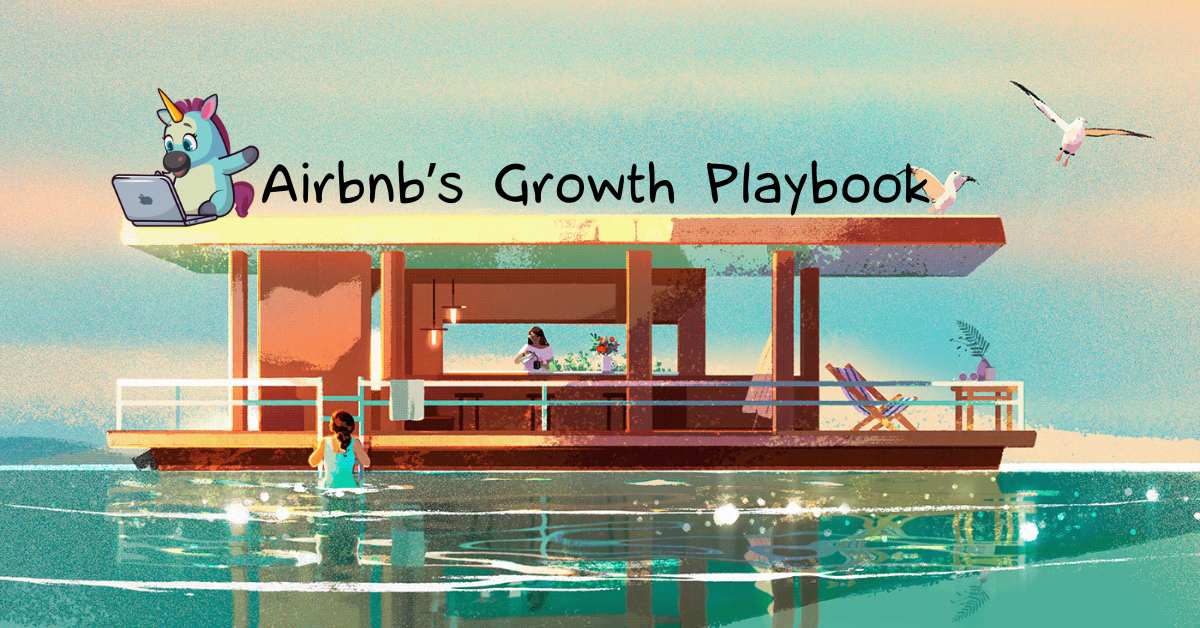
Leave a Reply